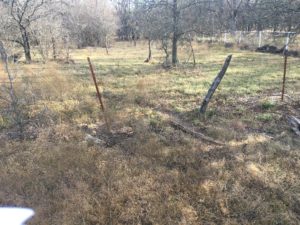Preparing Your Texas Land or Ranch for Sale
You have now decided to sell your land or ranch. You have to prepare it just like a house seller. You have to make it as showcase-ready as possible and within the scope of work and money you can shell out.
First, find an experienced real estate agency that handles raw land and ranches. Experienced raw land and ranch realtors are more knowledgeable about the market and what buyers are looking for. They have a sharp eye for what needs to be developed or tweaked in the property before displaying it to prospects, as well as features that will add or subtract to the value of the land.
 Now Let’s Get To Work
Now Let’s Get To Work
Put yourself in a buyer’s shoes – what key features or elements are you looking for in a ranch or land?
- Your fence should be in top shape, or the best you can do. Fix loose or broken wires and replace posts that have seen better days. If you have electric fencing, make sure these are operational without you being electrocuted. Yearly cleanup of overgrowth of land near the fences would save you time and money; however, if you’ve neglected it, a once-over is advisable so buyers can see the fences. For areas without fences, mark them with “T” posts or stakes, so buyers will see the boundaries of the property.
- Give them the grand entrance – Fix the gate. A working and presentable gate gives the impression that the property is well taken care of. A gate that opens and closes well without any insect nest or grass covering it gives a good first impression. It doesn’t have to be new, just working, not hard to open or close and fresh paint will do the trick. If you can spare the money and time to install a new one, that would be even better.
- Buyers are always in awe whenever there are great views or water features on a property. Make sure river or lake banks are clean, free from trash, debris, and other obstacles. Enhance viewing spots by keeping them clean, trimmed, and mowed as well as the path to get there. It’s like when showcasing a house; you are enhancing the best features to stir up the imagination of buyers what they can do to the property – for them to imagine the further potential of the ranch.
- Concerning the viewing pleasure of potential buyers, make sure all viewing spots to see the whole property are accessible without being tangled in shrubberies or anything that can deter them from touring or walking through the area.
- Speaking of accessibility, if your property is landlocked, make sure you have a documented easement agreement with your neighbor or neighbors that gives access to the land. Aside from the agreement, make sure that easement access or the road leading to your land is accessible and direct, so as not to create confusion on which property is on sale and not enter your neighbor’s land.
- Clear out all the trash and junk that stick up like sore thumbs from the pristine views. Junk and trash such as rusting vehicles, wires, or metal pipes should be cleared out. That also includes the shell casings of guns from the last shooting party with friends and family. You want to give the best impression to buyers that they are buying a prime piece of property that’s well taken care of. This will give them the idea of the potential of the land, and possibilities for income generation or leisure activities.
- For still useable stockpiles of wood, pipes, bricks, automobile parts, and other knick-knacks, organize them in one place. These things can still look presentable as long as you arrange them in an orderly manner.
- Of course, you also need to stage the main house, barn, or any other structure, adding to the curb appeal of the property. A fresh coat of paint, roofing repairs, amenities such as HVAC, insulation, water supply, and heating are the usual home features the buyers will be checking.
After tending to the physical aspects of the property, it’s time to look after the paperwork, documents you need to have on hand.
- Land title, real property tax receipts, easement agreements, and water rights are the basic papers that need to be on hand, to be checked by your realtor. Without these papers, it will be difficult to sell the property.
- Prepare records of Income statements, as well as documents of wildlife and fisheries in the property. These help target the right buyers.
- List the livestock, equipment, and structural improvements that will be included with the ranch. You want prospective buyers to have a full picture of what they are getting with the land.
All these preparations will make it easier for you, your realtor, and the buyer to conclude terms of pricing, offer, and final decision on the sale. A ranch or land sale is just like selling a house. You have to stage it, both physically and on paper for you to get the optimal price.


